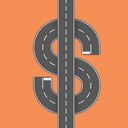Inflation's bumpy ride to normal

An encouraging run of data in recent months showed inflation receding. But that came to a halt in January.
What's new: The latest Consumer Price Index, out Tuesday, showed still-firm price increases in key areas of the economy. The data fell short of expectations that inflation would slip below 3% for the first time in years.
Why it matters: A single report does not kick the U.S. economy off the disinflationary path.
- But it might stoke concerns that beating inflation will be a bumpy ride — much to the disappointment of American consumers, Federal Reserve officials and a Biden administration looking to sell the economy to voters.
- "[T]he path toward inflation normalization is likely to be prolonged, with ups and downs along the way," economists at TD Securities wrote.
By the numbers: Overall CPI rose 3.1% in the 12 months through January, a smaller increase than the 3.4% rise the prior month.
- But progress on core inflation — a measure that strips out food and energy prices and is considered a better gauge of underlying inflation — stopped: It rose 3.9%, the same as December. The index's monthly increase of 0.4% was the biggest since last spring.
- By a different measure, core CPI actually accelerated: The three-month annualized rate was 4% in January — up from the 3.3% in December.
The big picture: Fed chair Jerome Powell said the central bank wants "more good data" to confirm inflation is really returning to its 2% target.
- "Fed policymakers will likely put this inflation report in the 'not so good' column as they continue to exercise caution in assessing when to start easing policy," EY-Parthenon chief economist Gregory Daco wrote Tuesday morning.
- A rate cut next month was already off the table. More reports like Tuesday's could push it to even later this year.
- Bond yields spiked in response to the data, reflecting chilled expectations of rate cuts.
Yes, but: Much of the hotter-than-expected report comes down to sticky housing costs. The shelter index rose 0.6% — the largest factor in the core CPI's monthly increase, the government said.
- The way the government measures housing prices for CPI is wacky. Private sector data, for instance, shows cooling costs that have yet to be reflected in the official data.
- Of note: Housing is accounted for differently in the personal consumption expenditures price index — the gauge of inflation targeted by the Fed.
The intrigue: Stubbornly high costs in the services sector were a big driver of the hotter-than-expected inflation report — even if you strip out the sticky housing costs.
- The Fed has noted concerns about the services sector, where labor costs make up a bigger chunk of business expenses. Officials worried that the persistently strong job market could make prices in the sector more difficult to stamp out.
- The central bank has been watching the prices of services, excluding energy services and housing costs.
- This measure rose 0.8%, the most since April 2022, per Bloomberg.
What they're saying: "[Tuesday's] CPI report reinforces the Fed's concern that core services inflation will remain sticky because of a tight labor market," economists at BofA wrote in a note.
Details: Some of the price surges may be caused by one-off factors. Others might be proven more sticky.
- The "food away from home" index — i.e., eating out at restaurants — jumped by a half percentage point in January, the most since last spring.
- The index for motor vehicle insurance rose 1.4%. Hospital service charges jumped 1.6%, while transportation services rose 1%.
Meanwhile, costs for some goods saw some relief — helped by a large drop in used car and truck prices that declined outright by 3.4% in January.
- However, grocery store prices — particularly salient for consumers — rose by 0.4% last month after a lengthy stretch of more muted price gains.